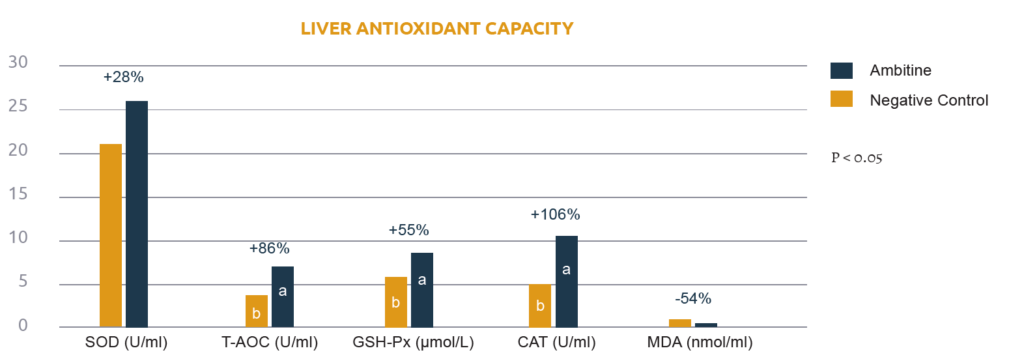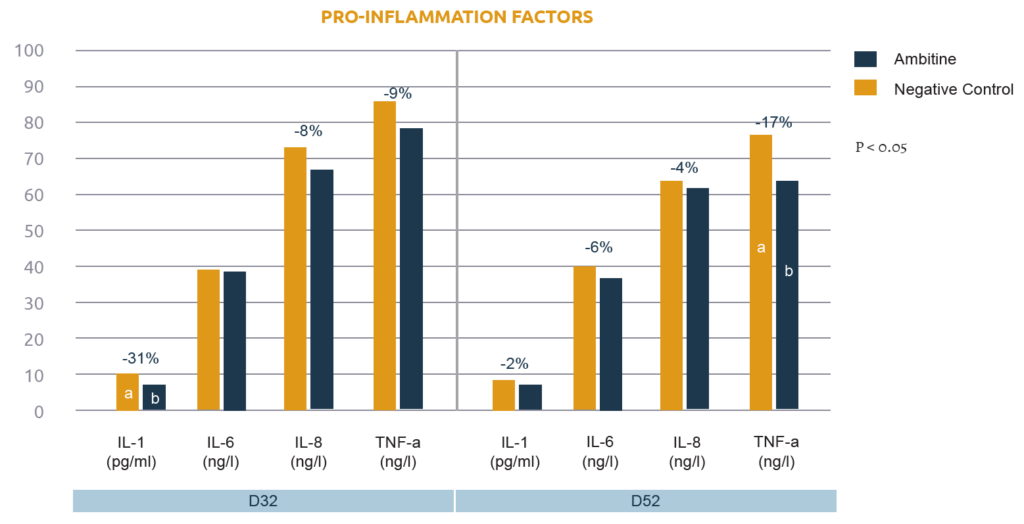Genetic progress is constantly pushing for more and heavier pigs. However, by nature, pigs get less efficient as they get bigger. Adopting the right nutritional strategy in the late finishing phase can help the animals cope with stress, minimize waste, and keep performance momentum.
Late finishing, a fair investment
Under commercial conditions, swine productivity is far below the animal’s genetic potential. The space between actual growth and genetic potential is called the ‘growth gap’ and is a multifactorial challenge. The profitability of a swine farm can be negatively impacted by stressors the animals’ experience. Major stressors are increased intake leading to feed competition, limited space, metabolic heat production, and the physiologic stress of puberty. On top of this, mature finishing pigs are transitioning from a primarily lean muscle deposition into a less efficient combination of lean muscle and fat deposition. Meanwhile, finishing feed represents about half of the feed usage on a farrow-to-finish operation. So, in the least efficient phase of the production cycle, striving for the best economic return pays off.
Coping with stress is a key to success
The adverse effects of stress on an animal are mediated through the endocrine, nervous, and immune systems. The mechanisms by which specific hormones and cytokines are activated—to reduce feed intake, muscle protein deposition, immune competence, and increase fatness—are now being understood. Although the physiological stress and environmental conditions of intensive farming can hardly be altered, influencing the pigs’ ability to cope with this stress via nutrition is feasible. Relevant feeding strategies can play a key role in positively modulating the microbiome, restoring oxidative balance, and reducing inflammation. A meta-analysis and large-scale commercial applications have shown that Ambitine®, as a multidimensional solution, can help unlock the growth potential of finishing pigs.
Good gut feeling to drive microbiome expression
To cope with stress, it all begins in the gut. When feed intake becomes erratic due to heightened competition among feeders or other environmental stressors, it can result in gut atrophy. This atrophy detrimentally affects the gut’s ability to absorb essential nutrients, leading to a decline in digestive efficiency. However, by modulating the balance and influencing the expression of the microbiome through the strategic utilization of functional ingredients, serotonin biosynthesis can be regulated and nutrient digestibility influenced. Ambitine®, with its multi-component, plant-based ingredients, acts as a powerful defense against reduced efficiency by stimulating digestive secretions to support optimal gut functions. Recent research has demonstrated the beneficial impact of Ambitine®, revealing how it helps enhance intestinal integrity by promoting a greater diversity of beneficial gut bacteria and increasing the production of volatile fatty acids, such as butyric acid (Figure 1).

Protecting the pig without compromising productivity
Restoring the balance between pro-oxidants and antioxidants, while reducing inflammation, is imperative to keeping the momentum of feed efficiency in fattening pigs. The technologies in Ambitine® aim at compensating for this potential performance decline not only by supporting gut function but also by increasing resilience towards external stressors. This stress resilience was recently highlighted in a Chinese study, where parameters such as oxidative stress and inflammation were measured. In the study, the Ambitine® treatment group improved liver antioxidant capacity with an increase in the levels of antioxidant enzymes such as superoxide dismutase, glutathione peroxidase, catalase, and malondialdehyde (Figure 2). Additionally, as the concentration of key pro-inflammatory markers was lower (compared to a control diet), the immune stress response was optimized in the finishing pigs treated with the Ambitine® (Figure 3). In the last weeks before market, pigs fed Ambitine® experienced an average improved daily weight of +4.2% and reduced feed conversion of 2.6%.


Significant advancements in comprehending the mechanisms behind the stress response present a chance to influence the endocrine and cytokine systems of pigs, ultimately enhancing productivity in commercial settings. For pigs to effectively combat late-finishing challenges, a comprehensive approach to nutrition is crucial. Optimal selection of active ingredients for fattener diets proves to be rewarding, as it aids efficiency and overcomes obstacles faced by pigs in the final phase leading up to market. Hence, Ambitine® serves as a valuable nutritional tool that offers numerous advantages during the late-finishing stage of pork production.